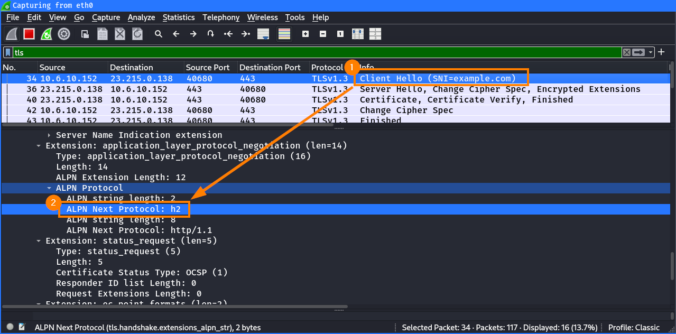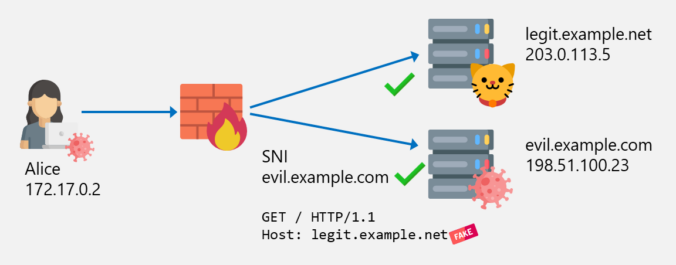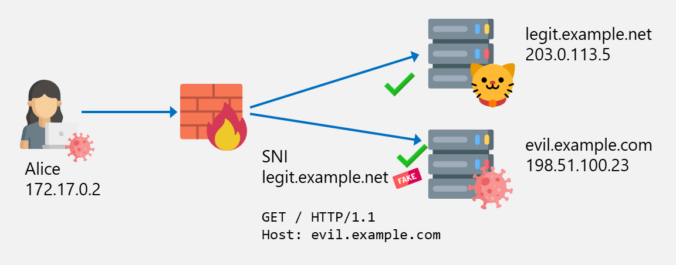In the previous posts of this series, we looked at different ways to bypass web filters, such as Host header spoofing and domain fronting. As we’ve learned, these techniques can be detected by proxies employing TLS inspection, by checking whether the hostname in the SNI matches the one in the HTTP Host header. If they […]
Compass Security Blog
Offensive Defense
The last two blog posts in this series were about SNI spoofing and Host header spoofing. We also learned that the latter is addressed by some vendors with a technique called “Domain Fronting Detection”. But what exactly is domain fronting? This will be explained in this blog post.
In the last post about bypassing web filters, I discussed how SNI spoofing works and how this can also be prevented by web filters. This post is about another bypass technique called Host Header spoofing.
This is the first part of a series of blog posts about techniques to bypass web filters, looking at increasingly advanced techniques with each part.
The first part is about how SNI spoofing can be used to bypass web filters.
At Compass Security, we recently launched our managed bug bounty service. We openly invite hunters to probe our publicly exposed services for vulnerabilities. In return for their valuable feedback, we offer monetary bounties up to CHF 5000. This blog posts presents an interesting vulnerability found by a hunter on the bug bounty program of our subsidiary, Hacking-Lab.
Modern anti-malware products such as Windows Defender increasingly rely on the use of machine learning algorithms to detect and classify harmful malware. In this two-part series, we are going to investigate the robustness of a static machine learning malware detection model trained with the EMBER dataset. For this purpose we will working with the Jigsaw ransomware.
Introduction The Content Security Policy (CSP) is one of the main web-based security mechanisms which helps websites’ owners to reduce their risks caused by Cross-Site-Scripting (XSS) or code injection attacks [1]. The CSP is nothing more than a policy that defines from where and to where a something can be loaded and fetched. This is […]
© 2025 Compass Security Blog





